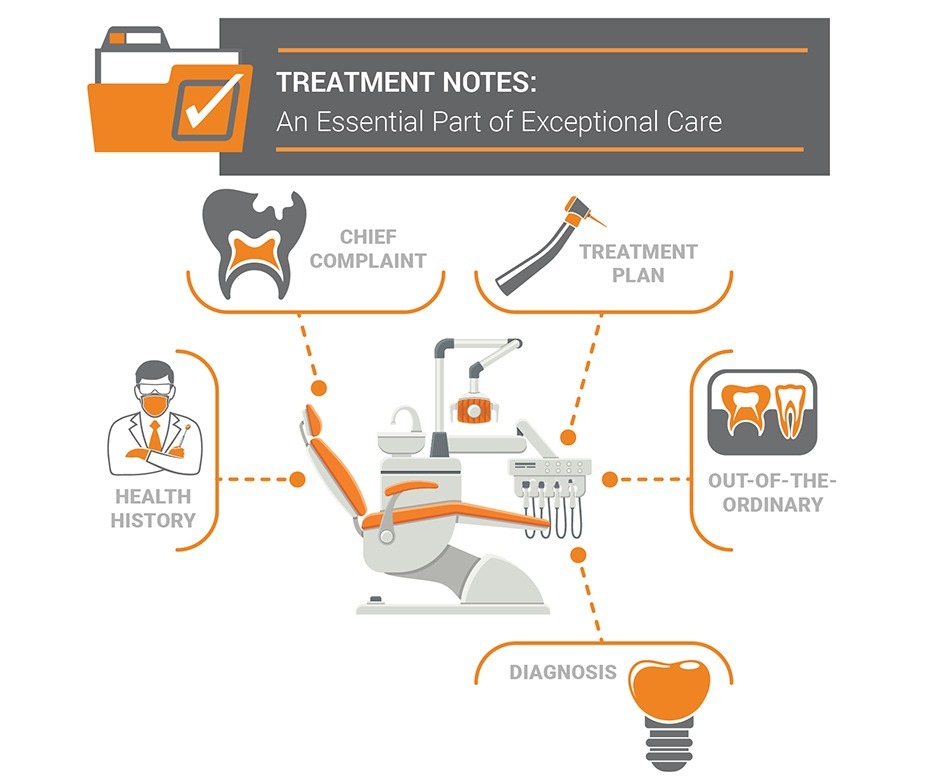Treating the entire patient includes making sure treatment notes are written in such a way that both a Dental and a Medical Doctor can read and understand the charts. Clearly, your treatment notes will vary depending on the type of procedure being documented; however, there are certain things that should be included in every treatment note.
There are five requirements for a treatment note to be considered complete:
- The first is the documentation that the patient’s health history was reviewed and/or recently updated.
- The second is any chief complaint reported by the patient and the plan developed to address this chief complaint. Ideally, this chief complaint should be documented in the patient’s own words.
- The third is a treatment plan for what is next for the patient. It could be a hygiene visit, a restorative visit, treatment at a specialist, or referral back to the office that normally manages their care if you are specialist.
- The fourth is any out-of-the ordinary comment or event that occurred during the patient’s visit. If it is a comment made by the patient, just like a chief complaint, it should ideally be documented in their own words.
- The fifth is a diagnosis or, at minimum, a differential diagnosis and plan to get to a definitive diagnosis. Include a few steps of how you are going to get to the bottom of the diagnosis.
Treatment Note Additions for Anesthetic
When it comes to any procedure that involves anesthetic, there are four more things that should be in the note:
- The first is blood pressure. Document your reading prior to anesthetic. (It is also something you should be doing with every new health history.)
- Second is the type of, and how much, anesthetic you gave.
- Third is the type of injection.
- Finally, if your patient doesn’t want anesthetic (even for things like crowns), document anesthetic was declined.
Other Treatment Note Additions for Exams, Restorative, and Hygiene
EXAMS
Document what kind of exam was done (limited, periodic, comprehensive, etc.).
Document any significant findings, not just an exam was completed. For instance, if you did pulp testing, you should document what tests were done (thermal, percussion, electric, etc.) and on which teeth as well as the results.
Don’t be vague. For example, don’t write “Pulp testing was WNL” but rather be more specific with “Endo ice on teeth numbers 3,5,12 and 14 produced a positive non-lingering response that was similar on all teeth and appears WNL.”
RESTORATIVE
- It is critical, as I have already stated, to document the diagnosis (i.e. decay, fracture, etc.) that is driving the treatment you are preforming.
- It is also a great idea to document who assisted you during the procedure.
- Please note, it is incredibly important to document all the materials used when discussing restorative treatment.
- For example, document the composite, bonding agent, cement, and shade used. If you are using a CEREC, document the block. In other words, document literally everything that goes in the tooth or teeth you are restoring.
- While this may sound like a pain in the you-know-what, we all have failures. While these failures may be due to our technique and independent of the materials we used, sometimes they are directly tied to a material flaw. Thus, documenting everything we use helps in figuring out what caused any problem. (Even the greatest materials from the greatest companies have issues from time to time despite their best efforts.)
HYGIENE
Finally, let’s cover hygiene notes. It is worth repeating that, just like with restorative notes, you need a diagnosis.
- Conduct and document full periodontal charting at least once a year and document any changes at every visit.
- Address the patient's home care and any oral hygiene instructions your team gave the patient.
- Document the recommended re-care interval.
- Lastly, document any hygiene recommendations, such as fluoride, and note whether the patient accepted them.
Just as “a stitch in time saves nine,” a few minutes to document can save both time and headaches down the line, to say nothing of ensuring the best possible care for your patients.

Christine Taxin is the founder and president of Links2Success, a practice management consulting company to the dental and medical fields.
FMI: 914-303-6464, Team@Links2success.biz, or www.Links2success.biz

